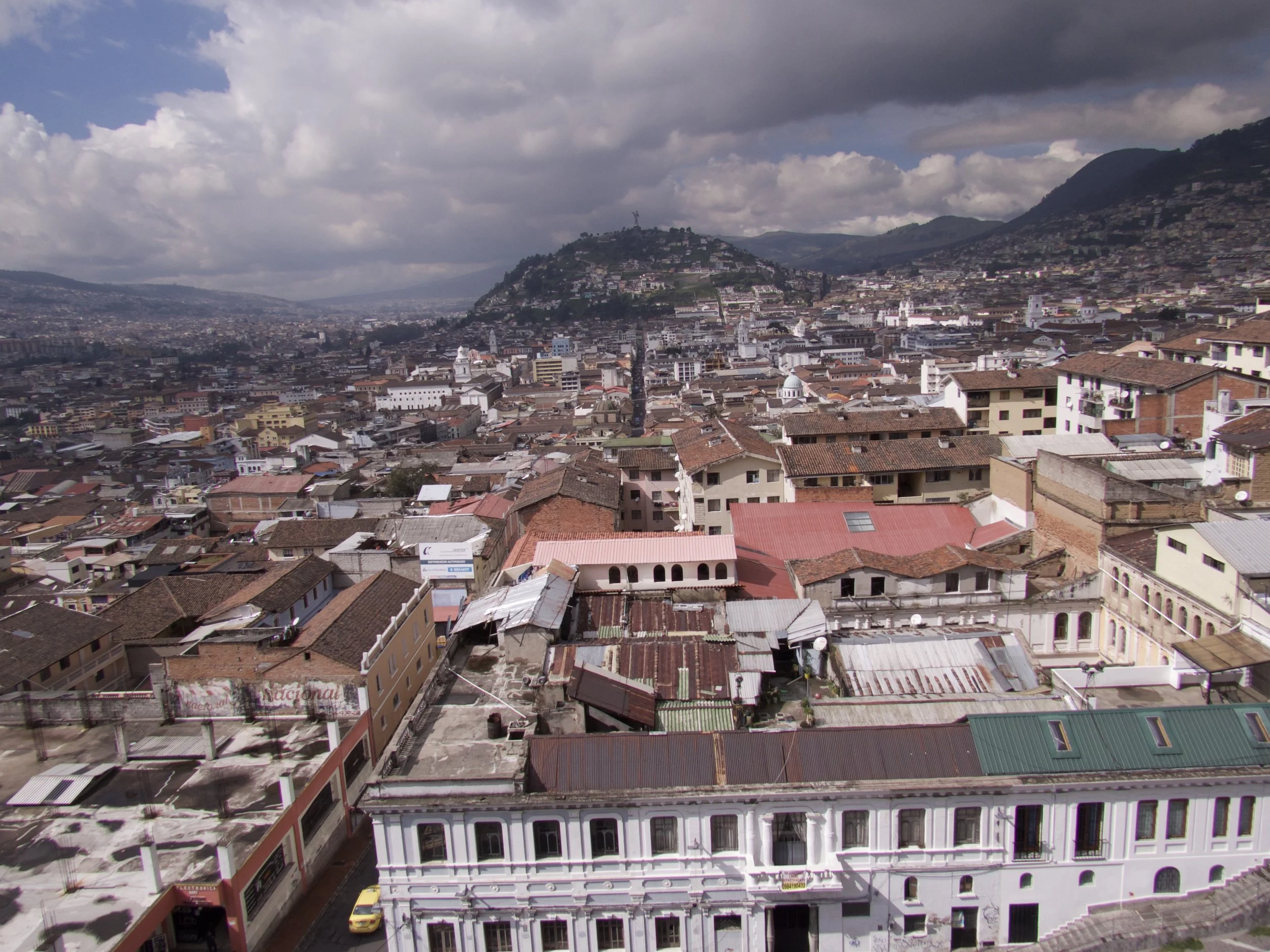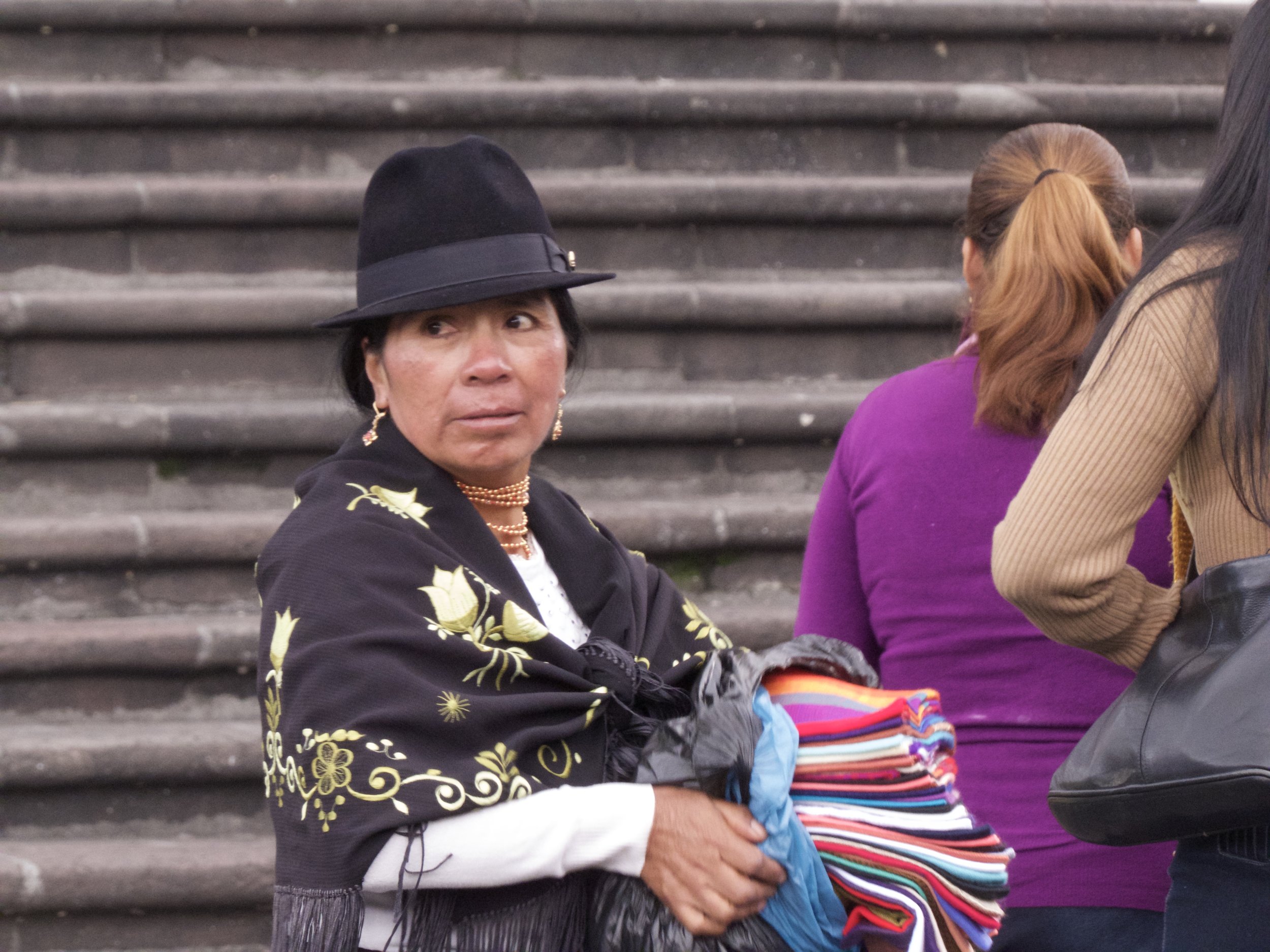Quito, Ecuador: at an altitude of almost 10,000′ this city is surrounded by green peaks of volcanoes and is surprisingly cooler, almost cold, place in South America.
From our hotel we did a city tour of old Quito, a Unesco World Heritage site because of its old Spanish buildings, cathedrals and other buildings. The area is prone to both volcanic eruptions and earthquakes so much of the old city is low buildings.
Quito’s National Cathedral
Perhaps daily life has lulled people into some complacency because the outskirts of this city of 2.5 million people has high rises built right on the edges of cliffs – in my eyes a disaster waiting to happen.
The old city squares felt very Spanish and we enjoyed strolling along, watching women in black felt hats and long skirts sell strawberries and other fruits and candies and woven cloths.
We’re a bit churched-out after spending time in Spain, but visited a large cathedral as well as an amazing smaller church completely decorated in gold.
But the highlight was our visit to the Equator. Here the invisible line dividing the northern and southern hemispheres creates for some fun science experiments. They have painted a big line on the ground so, accurate or not, you can stand with one foot in the northern, and one foot in the southern hemisphere. Kind of cool.
We were impressed with the demonstration of how water in the southern hemisphere turns the opposite way from water going down a drain in the northern hemisphere. So cool, I thought.The guy working in the tourist trap showed us: water flushed through a sink – either goes straight down when pour right on the equator, then swirls down the drain clockwise or counter clockwise depending on which side of the line we are on. We were most impressed and a bit baffled. Being a bit of a nonfiction writer, I decided to research this phenomena. And I found nothing but articles posted on science websites, the Huffington Post and so on, that explain that all this is a hoax! I was floored. I replayed the video I took. Then I went to the sink and poured water in the same manner. Indeed – I can make it go down clockwise or counterclockwise. It seems that the thing we enjoyed most in Quito was simply a hoax. I guess the people who showed us care nothing about the truth and fooling people. All that mattered was the income derived of unsuspecting tourists. So is it worse to buy postcards that are too expensive, souvenirs that turn out to be ‘made in China’ or to fall for equatorial tricks on the Equator?
We tried our hands at balancing an egg on the Equator. Because it is pulled one way and the other, it took a lot of patience but Kees earned a certificate for a skill he never knew he had! Another equatorial hoax…
The museum here displayed some local native history: an enormous boa constrictor (stuffed!) and several shrunken heads. To our amazement we learned not only how to make a shrunken head but also that this practiced happened as late as the 1990’s. Tourism likely improved once they stopped this practice.
We ate at a restaurant that specialized in Ecuador cuisine: empanadas with shrimp, cheese and avocado. And a fabulous soup made with a thick paste of peanuts and bananas.
We asked many questions about the education system (which is mostly free), about politics (same as elsewhere: elections with lots of unhappiness about corruption and broken promises), about religion (many young people turning away from the church and traditions) and also about why Ecuador is spelled with a c, not a q: Equador since it is named for the important line running through the country. The answer: this is the Spanish spelling. Ta-da, we always learn something new wherever we travel.








